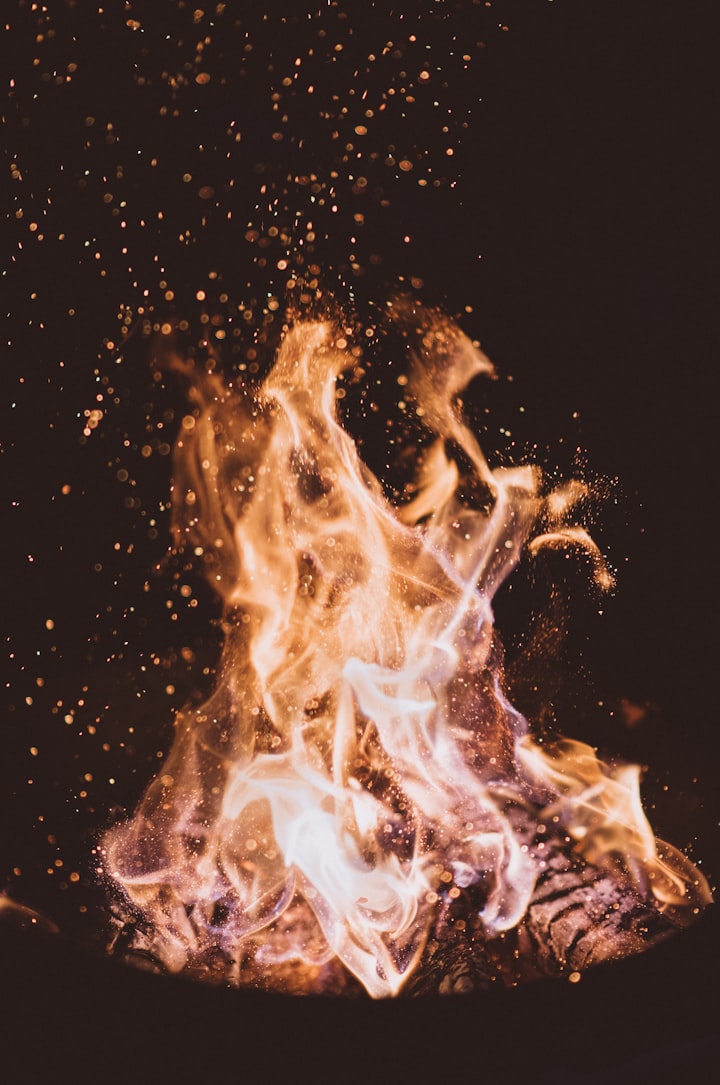
Three days prior to the festive Christmas of 2010, the quaint Irish city of Galway was witness to a tragedy that defied explanation. In the quietude of his home, 76-year-old Michael Faherty met a fate as perplexing as it was tragic. Engulfed in flames, his body reduced to a mere heap of ash, Michael's demise bore the eerie semblance of spontaneous human combustion, a phenomenon that haunts the annals of history with its enigmatic presence.
Amidst the charred remains of his dwelling, investigators were confounded by the inexplicable circumstances surrounding the fire. While Michael's armchair bore the brunt of the inferno, the rest of his abode remained strangely unscathed. No discernible source of ignition could be found, nor any traces of accelerant amidst the debris strewn about. Adding to the mystery was the pervasive presence of a noxious oily residue that coated the walls and ceilings of the ground floor, leaving an unsettling aura of the inexplicable.
The coroner's verdict only deepened the enigma, attributing Michael's demise to spontaneous human combustion. It was a chilling declaration - Michael Faherty had not perished in a mere house fire; rather, he had become the fire itself, consumed by flames of an inexplicable origin.
Yet, Michael's fate, though haunting, is not an isolated incident. Throughout history, accounts of individuals inexplicably bursting into flames have dotted the records, leaving a trail of bewilderment and speculation in their wake. From the tragic demise of Italian Countess Cornelia Bandi in 1731 to the mysterious case of Mary Reeser in 1951, wherein only her left foot survived the fiery ordeal, the phenomenon of spontaneous human combustion has left experts and laymen alike grappling for answers.
These cases share peculiar similarities: the near-complete obliteration of the victim's body, with only lower extremities often left intact; the presence of an oily residue at the scene; and the absence of any external ignition source, lending credence to the notion of an inexplicable combustion.
Various theories have been posited to elucidate this perplexing phenomenon, ranging from alcoholism and divine retribution to more esoteric explanations such as poltergeist activity or the purported effects of a hypothetical subatomic particle. Yet, amidst the myriad conjectures, a consensus remains elusive.
The prevailing skepticism among the scientific community is understandable. The notion of spontaneous human combustion defies conventional understanding, challenging the very principles of combustion and thermodynamics. While historical accounts abound, empirical evidence remains scant, relegating spontaneous human combustion to the realm of speculation and conjecture.
Theories such as the "Wick Effect" offer a semblance of explanation, proposing that the human body, akin to a candle, may serve as its own source of fuel under specific conditions. The ignition of clothing, fueled by the body's fat stores, could sustain a localized fire, resulting in the distinctive pattern of destruction observed in cases of spontaneous human combustion.
However, even this theory falls short in addressing the myriad intricacies of the phenomenon. The resilience of certain body parts amidst intense conflagration, the absence of external ignition sources, and the sporadic nature of occurrences all defy easy explanation.
Recent research, notably by biologist Brian Ford, has shed light on potential physiological factors that may contribute to the phenomenon. The metabolic state known as ketosis, wherein the body metabolizes fat stores for energy, could lead to the accumulation of flammable ketone bodies, rendering individuals more susceptible to combustion under certain circumstances.
Experimental evidence, albeit limited, has lent credence to this hypothesis, demonstrating the combustibility of tissue saturated with acetone, a byproduct of ketosis. Yet, questions persist regarding the prevalence and conditions necessary for such incidents to occur.
In the absence of definitive answers, spontaneous human combustion remains a tantalizing enigma, evoking both fear and fascination in equal measure. As we grapple with the mysteries of the universe, the inexplicable phenomenon serves as a sobering reminder of the boundless complexities that continue to elude human understanding.
Until such time as empirical evidence can unravel the veil of uncertainty shrouding spontaneous human combustion, it remains a haunting specter, lurking at the fringes of our comprehension. In the interim, we are left to ponder the chilling possibility that, amidst the mundane routines of daily life, a fiery fate may await us all, lurking just beyond the realm of rational explanation.
About the Creator
Med Karim
"When you have a dream, you've got to grab it and never let go."






Comments
There are no comments for this story
Be the first to respond and start the conversation.